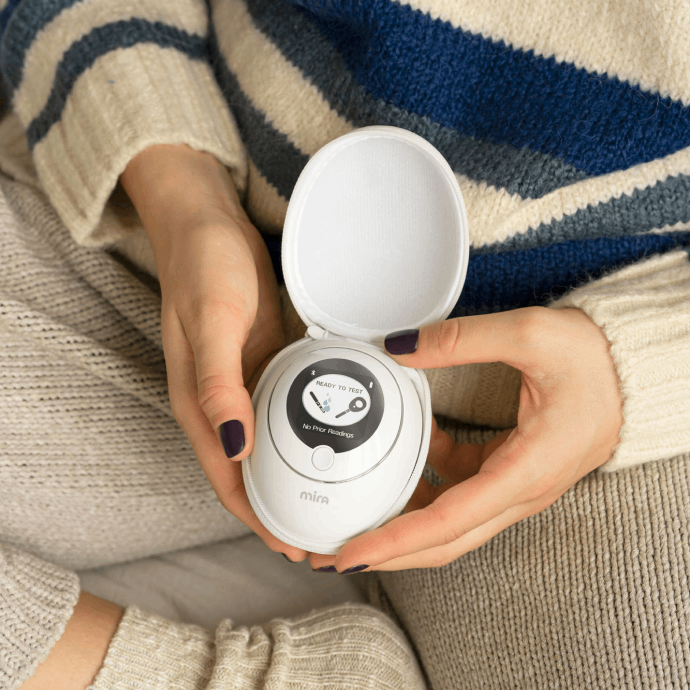What is At-Home Artificial Insemination?
You have probably heard of intrauterine insemination or IUI– but with the rising costs associated with fertility treatment, many couples are skipping traditional methods in favor of at-home artificial insemination. But what is at-home artificial insemination and how does it work?

At-home artificial insemination mimics the techniques used by doctors to perform intrauterine and intracervical insemination (ICI), but without the hassle of seeing a fertility doctor. While at-home insemination may not be as effective as, say, a full cycle of IVF, it is an affordable option for couples who are trying to conceive but worried they cannot afford traditional fertility treatments.
Given the fact that many fertility clinics have placed cycles on hold due to the coronavirus, more and more couples may be interested in trying at-home artificial insemination so they do not have to wait for clinics to reopen before achieving their dreams of starting a family. If this describes you, read on to discover how at-home artificial insemination works and whether it is right for you.
The aim of this article is purely educational. Mira is not designed to monitor any fertility treatment. Please always refer to your healthcare provider.
At-Home Artificial Insemination vs.Traditional Fertility Treatments
At-home artificial insemination differs from IUI and ICI in that it is performed at home, without special medical tools or the assistance of a doctor. In an IUI or ICI cycle, doctors may prescribe medications such as Clomid to stimulate the production of eggs and increase the chances of conception.
At-home artificial insemination is, however, more similar to ICI than IUI. In IUI, the fertility doctor will also use a speculum and a special instrument to insert the sperm directly into the uterus, increasing the odds of conception. They will also “wash” the semen in a special process that makes sperm more concentrated and more likely to fertilize an egg. These procedures cannot be repeated at home.
Other than these differences, at-home artificial insemination is actually not that different from IUI or ICI. As in IUI or ICI, at-home artificial insemination may use a donated sperm sample (whether from a friend, a sperm bank, or a non-profit organization) or the sperm of a partner. The woman may then insert the sperm into the vagina using a syringe or menstrual cup (more on how to insert and fold a menstrual cup here), and lay down for 15-30 minutes afterward to encourage sperm to move into the uterus.
This technique, known as the “turkey baster method” by some, is very similar to ICI, in which a doctor uses a syringe or cervical cap to insert sperm near to the cervix, though medications are not used to stimulate the production of eggs. You can purchase an at-home artificial insemination kit to assist in the process, or even turn to an in-home medical provider, such as a midwife, who may be able to help your at-home artificial insemination go more smoothly.
Still, at-home artificial insemination is less effective than traditional fertility treatments, including IUI and IVF. The success rate of ICI and at-home artificial insemination is estimated at between 10 and 15 percent, while the success rate of IUI is up to 20 percent and the success rate of IVF is nearly 40 percent for women under 35.

How to Increase Your Odds of Conceiving Through At-Home Artificial Insemination
Many couples are hesitant to try IUI or IVF at a clinic. You may worry about the costs associated with traditional fertility treatments or harbor concerns about the intimacy of conceiving in a doctor’s office. Whatever the reason, you may be interested in trying at-home artificial insemination before turning to treatments like IUI or IVF.
If you are interested in trying at-home artificial insemination, you should know that at-home artificial insemination has a relatively low success rate. That being said, there are many ways you can increase your chances of conceiving through at-home artificial insemination. Here are some of the steps you might take to ensure that your at-home fertility treatment is as successful as possible:
- Monitor your fertility regularly. It’s essential to have an understanding of your menstrual cycle prior to undergoing any fertility procedure. Ovulation trackers like Mira fertility tracker can help you measure the concentration of hormones in your urine, allowing you to pinpoint exactly when in your cycle you are at your most fertile. You will want to use a fertility tracker for at least one full cycle prior to attempting at-home artificial insemination so you can estimate when you will be most fertile for the procedure.
- Understand the legal risks. Reproductive law specialist Melissa Brisman told The New Republic that most states require artificial insemination to occur under the supervision of a licensed medical professional in order to fully terminate a donor’s parental rights. If you are using a donor’s sperm for at-home artificial insemination, you may want to consider drawing up legal documents or keeping records of any payment and communication between yourself and the donor in order to protect your parental rights. Going through an organization that protects your legal rights while obtaining a sperm donor sample may also help. Consult a lawyer if you are especially uncertain about the ethics of at-home insemination.
- Screen your donor’s health. Even if you are using a donor whom you know well, you will still want to ensure that their sperm is as healthy as possible to reduce the odds of infection and increase your chances of a successful conception. At a fertility clinic, health testing and STI screenings are performed prior to any insemination procedure. While at-home artificial insemination cuts some of the costs of fertility treatment, it does not necessarily come with the same assurances about the donor’s health and wellness. Thus, you should always ask a sperm donor to undergo the necessary testing at a doctor’s office prior to artificial insemination — even when it is performed at home. This is an essential step in order to protect your health, as well as the health of your future child, during the process of fertilization.
- Perform at-home insemination properly. Finally, you should gather a thorough understanding of the proper procedure prior to undergoing at-home artificial insemination. The odds of conceiving through ICI are already lower than the odds of conceiving through traditional fertility treatment — and making mistakes in the insemination process could further lower those stats. In order to properly perform at-home artificial insemination, use a sterile, needleless syringe to insert your partner or donor’s sperm sample into the vagina. You’re going to want to insert the syringe as deep into the vagina as it can comfortably go, in order to get the sperm as close to the cervix as possible. After the sperm has been injected near the cervix, you should lay down for 15-30 minutes post-procedure to encourage sperm to enter the uterus and fertilize an egg. Follow these steps carefully for the best odds of a successful at-home insemination.
- Test at the right time. After performing at-home artificial insemination, you may be eager to see those pink lines on your pregnancy test. However, you should remember that it takes a few weeks before a pregnancy test will show a positive result, and that at-home pregnancy tests can yield false-positive results. For the most accurate results, you should take a pregnancy test on the day you expect your next period to start, about two weeks after ovulation. If the test comes out positive, UT Southwestern Medical Center recommends waiting for one to two weeks before visiting your doctor for an in-office blood test to confirm the results.
Mira’s Editorial Process
All content produced by Mira meets stringent editorial standards, ensuring excellence and accuracy in language and medical precision. Every piece undergoes thorough fact-checking and review by qualified professionals. Check out our full editorial process to learn more.










